Imagine stepping outside on a sunny morning to enjoy your lush, green lawn, only to discover a creeping invader—spurge—spreading its wiry stems and tiny leaves across your turf. This stubborn weed isn’t just an eyesore; it’s a nutrient-hungry competitor that will quickly overrun your grass if left unchecked. But fear not! With the right strategies, you can eliminate spurge without harming your lawn. Let’s dive into everything you need to know to reclaim your yard.
Understanding Spurge: Why It’s a Lawn’s Worst Nightmare
Spurge is a summer annual weed that thrives in heat, drought, and poor soil. Two common types plague lawns: prostrate spurge (low-growing with reddish stems) and spotted spurge (marked by purple spots on its leaves). Both varieties share a few notorious traits:
Rapid Reproduction: A single plant can produce thousands of seeds, which burst from seed pods when disturbed.
Deep Roots: Its taproot digs deep into soil, making it resilient to shallow removal.
Toxic Sap: The milky-white sap in its stems can irritate skin and deter pets from grazing (though it’s rarely fatal).
Spurge thrives in weak, thin lawns where grass struggles to compete. It’s often a sign of underlying issues like compacted soil, inadequate watering, or nutrient deficiencies.
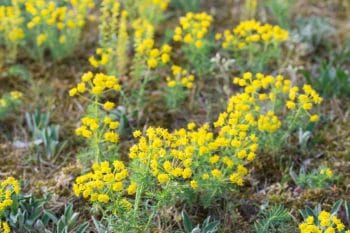 Timing: When to Expect Spurge in Your Lawn
Timing: When to Expect Spurge in Your Lawn
In North Texas, spurge weed (commonly prostrate spurge or spotted spurge) typically appears in late spring through summer and can persist into early fall. Here’s a breakdown:
Germination: Spurge seeds germinate when soil temperatures consistently reach about 75°F, which usually happens in late April to May in North Texas.
Peak Growth: Spurge thrives in hot, dry conditions, so you’ll see it spread most aggressively during June, July, and August.
Decline: It begins to die off as temperatures cool in late September or October.
Since spurge is a warm-season annual, pre-emergent herbicides are most effective when applied in early spring, before germination begins—typically around late February to early March in North Texas.
How to Kill Spurge Without Harming Your Grass: 5 Proven Methods
1. Selective Herbicides: Targeted Weed Control
Selective herbicides are the gold standard for eliminating spurge in lawns. These products attack broadleaf weeds while sparing grass. Key ingredients to look for include 2,4-D, dicamba, and mecoprop (often combined in “three-way” herbicides). These chemicals disrupt weed growth hormones, causing spurge to curl, yellow, and die within days.
Tips for Success:
- Timing is Critical: Apply herbicides in early summer when spurge is young and actively growing. Mature plants are harder to kill.
- Avoid Mowing: Skip mowing 2–3 days before and after application to let the herbicide absorb fully.
- Spot-Treat: Focus on infested areas to minimize chemical use.
- Follow the Label: Over-application can stress grass. Measure carefully!
Top Products:
- Ortho Weed B Gon Chickweed, Clover & Oxalis Killer
- Spectracide Weed Stop for Lawns
- Southern Ag Lawn Weed Killer with Trimec (ideal for warm-season grasses)
 2. Organic & Natural Solutions: Chemical-Free Alternatives
2. Organic & Natural Solutions: Chemical-Free Alternatives
For eco-conscious homeowners, organic methods can work—but require more effort:
Hand-Pulling:
- Wear gloves to protect your skin from spurge’s irritating sap.
- Grip the plant at its base and pull slowly to remove the entire taproot.
Pull before seed pods form to prevent future outbreaks.
Vinegar Spray:
- Mix 1 gallon of white vinegar (5–10% acetic acid) with 1 cup of salt and 1 tablespoon of dish soap.
- Spray directly on spurge, avoiding grass. Note: This non-selective solution will harm any plant it touches, so use sparingly.
Corn Gluten Meal:
- Apply this natural pre-emergent in early spring to inhibit spurge seed germination. It also adds nitrogen to soil!
Boiling Water:
- Pour carefully onto spurge patches. Effective for small infestations but impractical for large areas.
3. Starve Spurge with a Thick, Healthy Lawn
Spurge struggles to grow where grass is dense and vigorous. Strengthen your lawn with these steps:
Mow Smart:
- Keep grass at 3–4 inches tall. Taller blades shade soil, blocking sunlight from spurge seeds.
- Never remove more than 1/3 of the grass height in a single mow.
- Go to our lawn mowing service page to get signed up.
Water Wisely:
- Water deeply and infrequently (1–1.5 inches per week) to encourage deep roots.
- Avoid light, frequent watering, which promotes shallow roots and weed growth.
- Read our lawn watering guide for basic information on lawn watering.
Aerate Annually:
Core aeration reduces soil compaction, improves drainage, and helps grass roots access nutrients.
Fertilize Strategically:
Test your soil to identify nutrient gaps. Use a balanced fertilizer (e.g., 10-10-10) to feed grass without overloading it.
Arizona Cooperative Extension (2012) Healthy, vigorously growing turf will shade the soil surface and inhibit spurge seed germination. Poor spring transition of bermudagrass favors spurge. Fix irrigation system leaks and prevent excessive wet soils that will encourage spurge infestations.
4. Soil Health: The Secret to Long-Term Prevention
Healthy soil = healthy grass = fewer weeds. Spurge thrives in poor, compacted soil, so focus on:
- pH Balance: Most grasses prefer a pH of 6.0–7.0. Lime or sulfur can adjust levels if needed.
- Organic Matter: Add compost to improve soil structure and microbial activity.
- Mulch: Use grass clippings or shredded leaves to retain moisture and suppress weeds.
Let us rejuvenate your soil with our top dressing or lawn leveling services.
5. Pre-Emergent Herbicides: Stop Spurge Before It Starts
Apply pre-emergents like prodiamine or dithiopyr in early spring (when soil temps reach 55°F). These products create a barrier that stops spurge seeds from sprouting. Pair with corn gluten meal for organic prevention.
| Method | Description | Timing / Tips | Best For |
|---|---|---|---|
| Selective Herbicides | Broadleaf weed killers like 2,4-D, dicamba, mecoprop | Apply in early summer on young spurge; spot-treat; avoid mowing 2–3 days before/after | Quick, chemical control; large infestations |
| Organic & Natural Solutions | Hand-pulling, vinegar spray, corn gluten meal, boiling water | Pull before seed pods form; vinegar/salt spray sparingly; corn gluten in early spring | Small infestations, eco-conscious homeowners |
| Thick, Healthy Lawn | Mowing smart, deep watering, aeration, fertilization | Mow 3–4 inches; water 1–1.5” per week; aerate annually | Long-term prevention by crowding out weeds |
| Soil Health | Maintain pH balance, add organic matter, mulch | Test soil pH (6.0–7.0); add compost; mulch to retain moisture | Prevent recurrence by improving lawn resilience |
| Pre-Emergent Herbicides | Products like prodiamine or dithiopyr | Apply in early spring when soil temps reach 55°F | Stop spurge seeds from germinating; pair with corn gluten for organic option |
What NOT to Do: Common Mistakes to Avoid
- Using Glyphosate (Roundup): This non-selective herbicide kills grass and weeds alike—save it for driveway cracks!
- Ignoring Small Patches: Spurge spreads fast. Tackle it early!
- Overwatering: Damp soil encourages spurge germination. Stick to a deep-watering schedule.
When to Call Ryno Lawn Care LLC
If spurge keeps returning despite your best efforts, it’s time to call the pros. At Ryno Lawn Care, we offer:
- Customized Treatment Plans: We identify why spurge is thriving and address root causes (soil health, irrigation, etc.).
- Professional-Grade Solutions: Safe, effective herbicides applied with precision.
- Seasonal Maintenance: Aeration, overseeding, and fertilization to keep your lawn resilient.
Head over to our lawn fertilization and weed control service page for details on how we can help.
FAQs: Your Spurge Questions, Answered
Q: Is spurge poisonous to pets?
A: While its sap can irritate skin and mucous membranes, spurge is rarely life-threatening. Still, discourage pets from eating it.
Q: Can spurge survive winter?
A: No—it’s an annual that dies in frost. However, its seeds survive cold temps and sprout in spring.
Q: Why does spurge grow in my lawn but not my neighbor’s?
A: It likely thrives where grass is thin, soil is compacted, or nutrients are lacking.
Final Thoughts: Winning the War Against Spurge
Defeating spurge requires a two-pronged approach: kill existing weeds and prevent future growth by nurturing your lawn. Whether you DIY with selective herbicides or partner with Ryno Lawn Care LLC, consistency is key. Remember, a dense, healthy lawn is the ultimate defense against weeds!
Ready to say goodbye to spurge for good? Contact Ryno Lawn Care today for expert weed control and lawn care services tailored to your yard’s unique needs. Let’s make your lawn the envy of the neighborhood! 🌿
Reference:
Arizona Cooperative Extension. (2012, June). Managing spurge in the landscape, garden, and turf. University of Arizona. https://extension.arizona.edu/sites/extension.arizona.edu/files/pubs/az1572.pdf

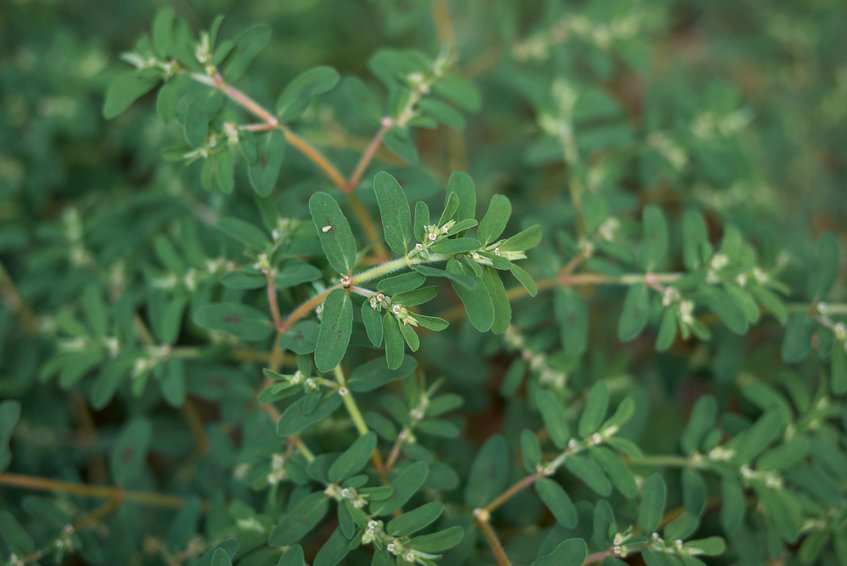
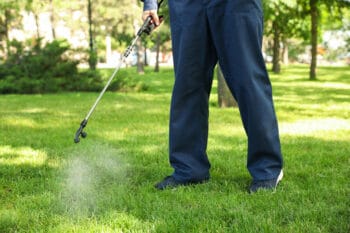
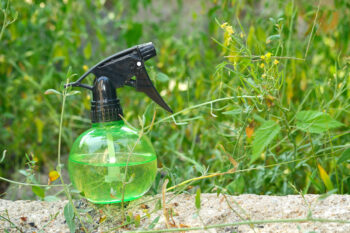 2. Organic & Natural Solutions: Chemical-Free Alternatives
2. Organic & Natural Solutions: Chemical-Free Alternatives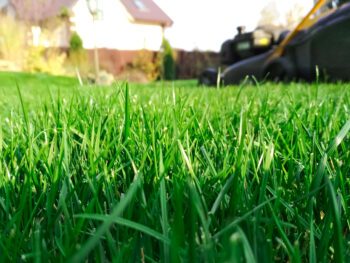
One Response
Spurge has been an absolute nightmare for me the last few years. I thought I had it under control this year but nope! So I am trying to find solutions. I think it had been drier the past few years which did my lawn no favors. I finally got it back to looking mostly healthy and I would hate risking anything to kill the spurge that would harm my lawn. I just wanted to say thank you for all this valuable information. I am hoping to get everything under control ASAP.